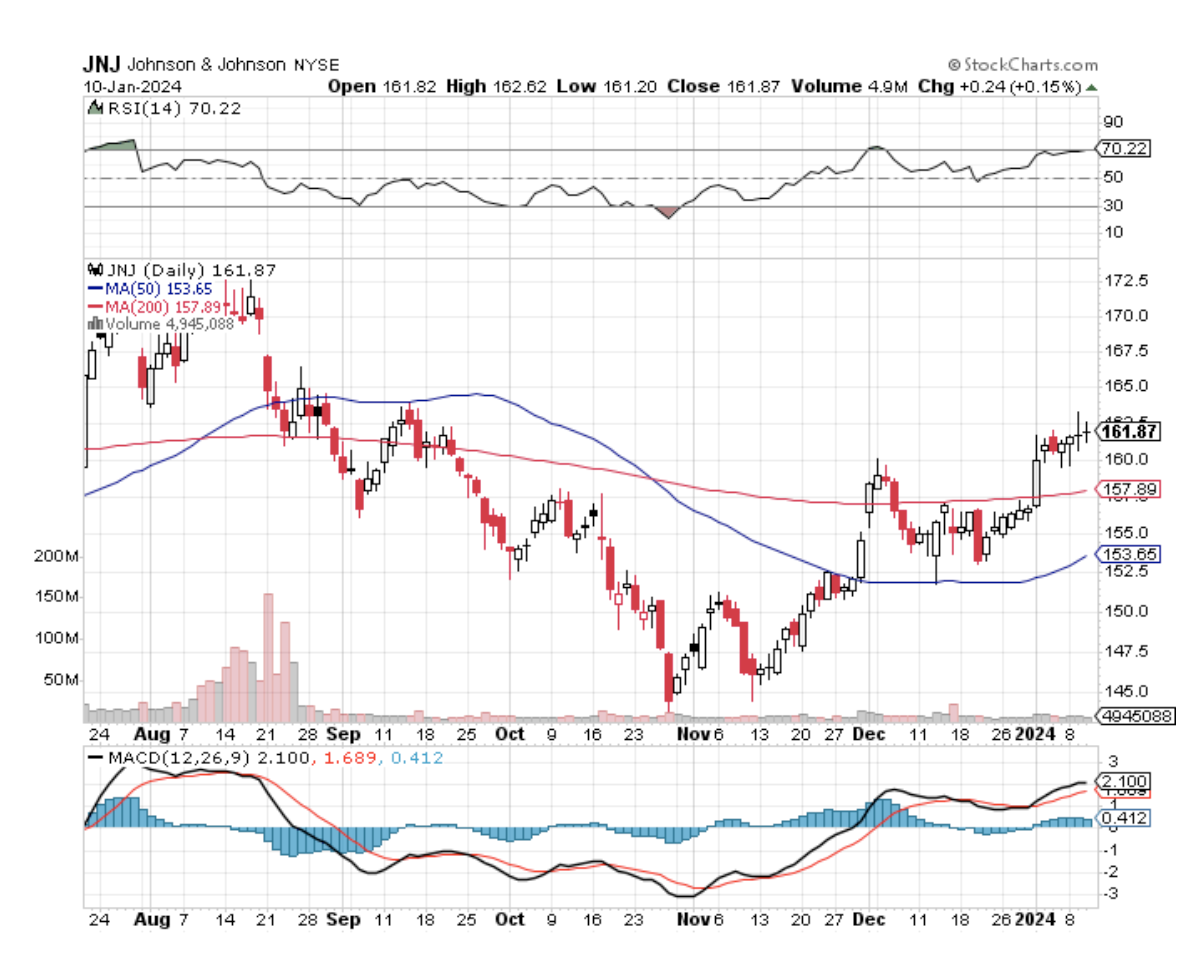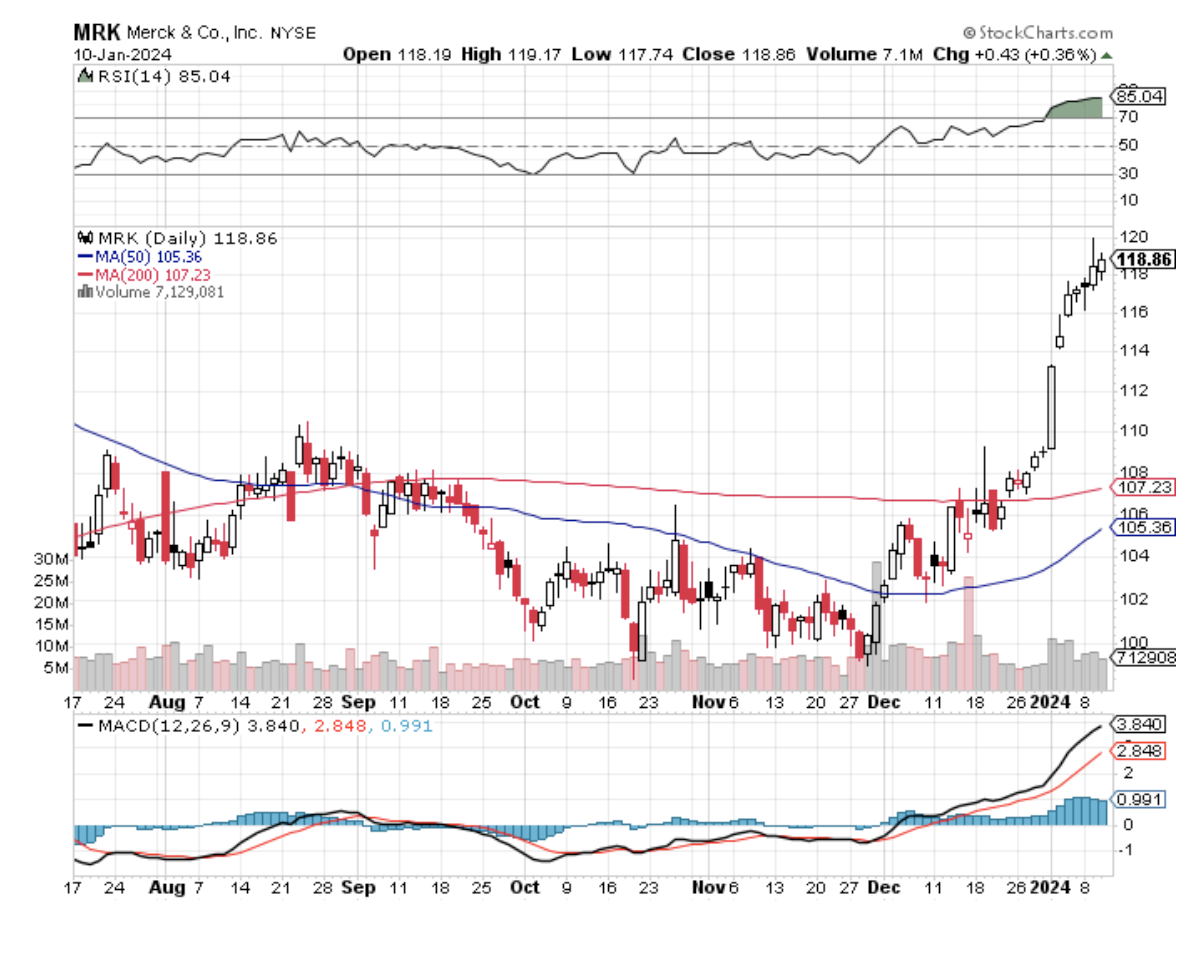Ah, San Francisco, the city of fog and fabulous biotech and healthcare feasts. In case you missed it, the J.P. Morgan annual healthcare conference, the biotech Super Bowl, just kicked off this January.
Imagine a bustling downtown San Francisco, where hotels are as jam-packed as a can of sardines, but instead of fish, they're brimming with investors and healthcare execs.
Let's focus on the biotech sector, which, let's be honest, has seen its fair share of ups and downs. The past three years? More like watching paint dry.
But, as if by magic, we've seen a recent upturn. A two-month price surge that’s as unexpected as it is welcome.
The SPDR S&P Biotech ETF (XBI), our financial barometer here, has gone from a nosedive (down over 60% since February 2021) to a rocket ship (up nearly 40%). Interest rate cuts and M&A buzz are like the Red Bull in this energy drink mix.
Now, to the heart of the story: big pharma's shopping spree.
The day of surprise comes when Merck & Co. (MRK) and Johnson & Johnson (JNJ) strut in with deals that leave us wide-eyed.
And these are not just any deals, but the kind where these healthcare giants are practically throwing money like it's going out of style – over 100% premiums over the last prices. It's like offering to pay double for a house just because you love the wallpaper.
Johnson & Johnson swoops in on Ambrx Biopharma (AMAM) for a cool $2 billion. At $28 per share, they're paying a 105.4% premium.
For context, this isn't your run-of-the-mill biopharmaceutical company. Oh no, Ambrx is more like the Elon Musk of the biotech world, innovating like there's no tomorrow.
This biotech is all about cooking up some of the most cutting-edge therapies out there – think antibody-drug conjugates (ADCs) and other engineered marvels that give the immune system a superhero makeover.
On top of that, Ambrx actually has a secret weapon – their expanded genetic code technology platform called Engineered Precision Biologics (EPBs).
This technology isn't just smart; it's Einstein-level genius. It brings together site-specific conjugation with proprietary linkers and payloads. It's like building a custom-made luxury car, except this one's designed to obliterate cancer.
Researchers are raving about Ambrx's ADCs, calling them “guided missiles.” And they're not exaggerating.
These bad boys zero in on cancer cells with the precision of a sniper, taking them out without wreaking havoc on the innocent bystanders – the healthy tissue. It's pretty much like having a Swiss watch in your medical arsenal, sleek, sophisticated, and super effective.
Impressively, Ambrx isn't stopping at just being a one-hit wonder. They're pushing the envelope with enhanced antibody-drug conjugate, immuno-oncology conjugate, and bispecific candidates. These aren't just treatments; they're potential game-changers in the war against cancer.
So, when Johnson & Johnson ponied up $2 billion for Ambrx, they weren't just buying a company; they were investing in a future where cancer might just meet its match.
In fact, Pfizer (PFE) recently grabbed Seagen for $43 billion in 2023, just to get a slice of this ADC pie. It's the latest fashion in cancer treatment, and everyone wants in.
Meanwhile, Merck, not to be outdone, grabs Harpoon Therapeutics (HARP) for $680 million, a 118% premium at $23 per share. It's a biotech-feeding frenzy, and Merck's got its teeth out.
Harpoon is a clinical-stage immunotherapy company that's not just playing in the big leagues, but changing the game. They're all about developing a novel class of T-cell engagers, and let me tell you, this stuff is like the Navy SEALs of cancer treatment.
Imagine these T-cell engagers as tiny, engineered proteins. They're like undercover agents directing a patient’s own T-cells (the body's immune commandos) to seek and destroy cells waving the bad guy flag – specific proteins or antigens carried by those nasty cancer cells.
Basically, it's like having a GPS-guided missile system in your body, targeting only the rogue cells.
And Harpoon isn't just dabbling here, but also innovating with their proprietary Tri-specific T cell Activating Construct (TriTAC) platform.
Picture a pipeline, but instead of oil, it's flowing with novel TriTACs focusing on laying siege to solid tumors and blood malignancies. If successful, they plan to arm the immune system with a whole new arsenal.
Aside from these, Harpoon also whipped up something they call the ProTriTAC platform. Think of it as the James Bond of T-cell engagers – it stays under the radar (inactive) until it gets to the tumor. Once there, it's “license to kill” mode on. This prodrug concept is slick, ensuring that the therapeutic action happens right where the trouble is, and not anywhere else.
And for their third act, Harpoon presents the TriTAC-XR platform. This one's a bit of a tightrope walker, designed to dodge a potential pitfall known as cytokine release syndrome – a sort of overreaction from the immune system. It’s like having a safety net under your high-wire act.
Now, these premiums are not just showing off. They're a sign of desperate love from big pharma for these biotech beauties, a stark contrast to the recent cold shoulder of stock market blues.
Recently, there have also been whispers of Novartis (NVS) eyeing Cytokinetics (CYTK), a biotech belle with a $9.2 billion price tag. It's like the gossip at a high school prom, only with more zeros.
So, what's the takeaway from this biotech bazaar? It's simple: after a snooze-fest of a bear market, biotech's back, and it's hotter than a stolen Ferrari.
For investors, it's like watching a new season of your favorite show, only this time, the plot twists involve billion-dollar deals and cutting-edge cancer drugs. I suggest you buy the dip.



